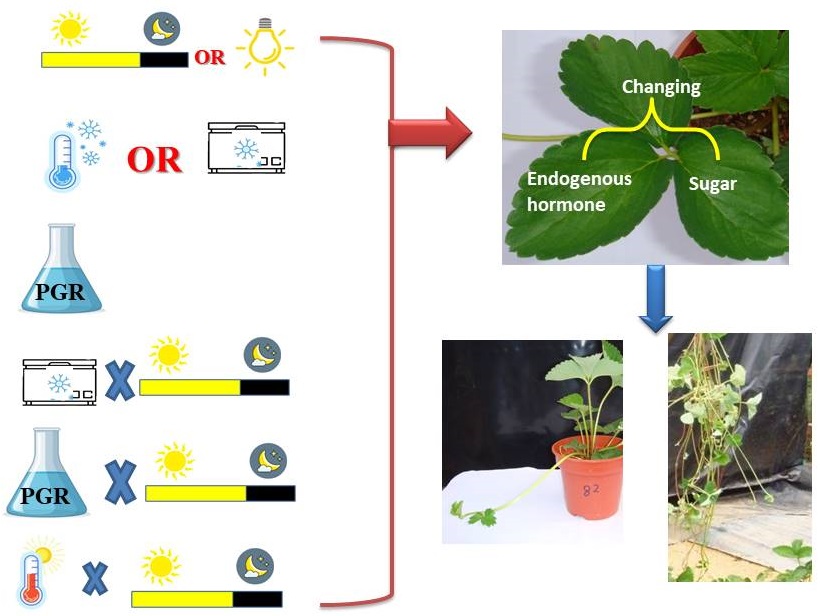The habit of strawberry flowering is the key for runner propagation, where the photoperiod is the main environmental factor - A review

Published 2024-01-18
Keywords
- Chilling,
- division,
- flowering,
- Fragaria × ananassa Duch,
- gibberellin
- photoperiod,
- proliferation ...More
How to Cite
Copyright (c) 2023 Isam Al-madhagi

This work is licensed under a Creative Commons Attribution 4.0 International License.
Abstract
Despite the advancement of tissue culture in strawberry plant propagation, the degree of elite for field cultivation depends on forcing the plant to produce runners. The strawberry flower habit [everbearing (EB), seasonal berry (SB), short-day (SD), long-day (LD), and day-neutral (DN)] defines the method of encouraging the plant to generate runners, since the formation of runners is mostly influenced by genetic factors before being influenced by environmental factors. Stolon production, which occurs as a result of vying for resources under certain environmental circumstances, is the reverse of blossoming. Therefore, any stimulus that encourages stolon formation and vegetative growth limits the development of flower buds, which is necessary for elite propagation. Long photoperiod, temperature, chilling hour, or cold storage, and plant growth regulators (PGR) are cited as these variables. Temperature has a significant impact on runner development, although the long daily photoperiod (LD) remains the most crucial component in runner induction. However, when LD interacts with other factors like temperature, cold storage, and gibberellins, its efficiency is increased. Thus, based on the cultivars and the seasonal climate of the geographical location, the best approach for strawberry propagation is identified by optimising the planting date for propagation or adjusting the propagation circumstances.




